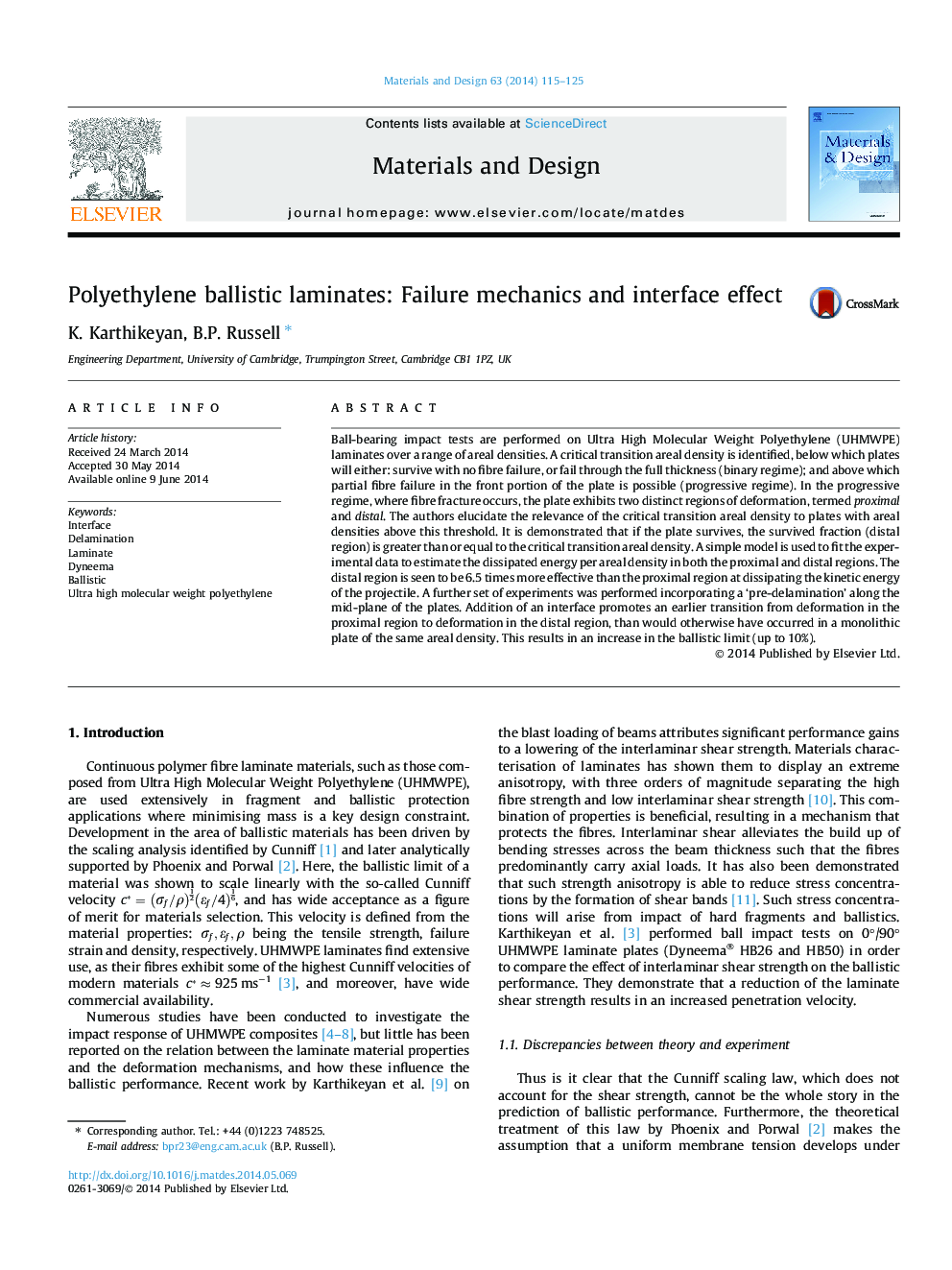| Article ID | Journal | Published Year | Pages | File Type |
|---|---|---|---|---|
| 828984 | Materials & Design (1980-2015) | 2014 | 11 Pages |
•Presents coherent overview of the penetration mechanics of UHMWPE laminates.•Explores effect of areal mass on the ballistic limit and identifies two regimes.•New theoretical framework proposed for understanding failure processes.•Introduction of pre-delamination results in 10% performance benefit.
Ball-bearing impact tests are performed on Ultra High Molecular Weight Polyethylene (UHMWPE) laminates over a range of areal densities. A critical transition areal density is identified, below which plates will either: survive with no fibre failure, or fail through the full thickness (binary regime); and above which partial fibre failure in the front portion of the plate is possible (progressive regime). In the progressive regime, where fibre fracture occurs, the plate exhibits two distinct regions of deformation, termed proximal and distal. The authors elucidate the relevance of the critical transition areal density to plates with areal densities above this threshold. It is demonstrated that if the plate survives, the survived fraction (distal region) is greater than or equal to the critical transition areal density. A simple model is used to fit the experimental data to estimate the dissipated energy per areal density in both the proximal and distal regions. The distal region is seen to be 6.5 times more effective than the proximal region at dissipating the kinetic energy of the projectile. A further set of experiments was performed incorporating a ‘pre-delamination’ along the mid-plane of the plates. Addition of an interface promotes an earlier transition from deformation in the proximal region to deformation in the distal region, than would otherwise have occurred in a monolithic plate of the same areal density. This results in an increase in the ballistic limit (up to 10%).
